

This index offers themed windows to the individual entries in A Personal Diary of the Israeli-Palestinian Conflict. One sections may contain cross-references to relevant diary entries that appear in another section. Section titles and introductions are listed below as chronologically as is possible. A chronological list of all diary entries is also available.
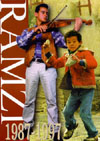 INTIFADA DIARY: TEN YEARS AFTER
INTIFADA DIARY: TEN YEARS AFTER
The Intifada was raging during my first visit to Palestine in August 1989, and became a key foundation stone in my understanding of the Israeli-Palestinian conflict. The Intifada represented a major shift of consciousness in Palestinian society, a "shaking off" of the Israeli occupation where it had invaded all aspects of life. The Intifada was about far more than stone-throwing, involved all sectors of Palestinian society, and gave birth to a thriving community of non-governmental organisations.
Intifada Diary was a work to be undertaken between December 1997 and December 1998 to commemorate 10 years since the beginning of the Palestinian Intifada on 9 December 1997. Unfortunately my work on this project was interrupted by the demolition of my home in May 1998. Intifada Diary forms a section of the Peacequest multi-perspective website project on the Intifada.
 RAMALLAH DIARY
RAMALLAH DIARY
In December 1995, accompanied by previously unheard of local celebrations, Israel pulled out of Ramallah, the West Bank Palestinian town where I lived from 1994 to 1998. It was quite an experience to see how much the town changed in the aftermath of this event, a direct result of the new hope that redeployment initially gave people. Since then, after it became increasingly clear that Israel's main priority had been to hand over the headache of controlling a hostile population to the Palestinian police, and land confiscation and other signs of occupation carried on unabated, this hope has evaporated. Several other sections of the diary deal with subsequent events in the Ramallah area and provide an important sequel to this section, and are listed in the index of this section.
 CLOSURE DIARY
CLOSURE DIARY
Less than two months after the December 1995 Israeli redeployment from Ramallah, a previously unseen manifestation of the Israeli occupation took root - the closure of routes between the Palestinian towns of the West Bank. Certainly, closure itself was not a new measure - Jerusalem has been inaccessible to Palestinians since March 1993 and the Gaza Strip sealed off even before that - and one can see the roots of closure policy in the Israeli practice of curfew, but never before had the Palestinian residents of the West Bank been subjected to such a severe restriction on their internal freedom of movement. To understand a bigger picture, it is always helpful to look at one part of it. Closure Diary focuses on the experience of the Palestinian residents of Ramallah and the university community of Birzeit, offering reports of day-to-day life under closure, one of the biggest cited frustrations of post-Oslo life.
 BIRZEIT DIARY
BIRZEIT DIARY
Birzeit University is the Palestinian Harvard or Oxford. Established in 1924 as a school, it adapted over the years to become the premier Palestinian institution of higher learning. During the years before the Palestinian Authority arrived, Birzeit stepped into the void and undertook some of the most necessary and dynamic work in the country, one example being the only water testing of Palestinian water sources in the West Bank and Gaza Strip. As the only truly independent national Palestinian institution, it became the focus of much media attention and Israeli repression during the 1980s and early 1990s. This section of the diary focuses in particular on the student political life at Birzeit, providing a window into one of the most vibrant arenas in Palestinian society.
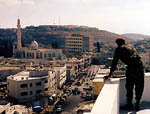 PALESTINIAN AUTHORITY DIARY
PALESTINIAN AUTHORITY DIARY
At the signing of the Declaration of Principles betwen the State of Israel and the Palestine Liberation Organisation on the White House lawn in September 1993, provision was made for the first Palestinian autonomous government - the Palestinian Authority (PA). In May 1994, the PA took over parts of Gaza and the West Bank town of Jericho. As 1995 ended, most of the remaining Palestinian West Bank towns - housing 95 percent of the population - were similarly handed over to the Palestinians, bar Hebron whose redeployment was delayed. However, once Palestinians had control over their own lives for the first time in history, it gradually became clear that all was not well as the population began to realise that violations of human rights and civil liberties had been included in the handover.
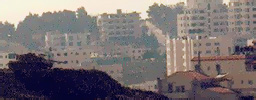 'ON THE GROUND IN RAMALLAH' DIARY
'ON THE GROUND IN RAMALLAH' DIARY
All hell broke loose in the wake of the September 1996 opening of a tunnel in Jerusalem. It wasn't so much the tunnel itself, just the political use that it was put to by the Israeli government. Over 80 Palestinians were killed in the ensuing clashes during which Israeli troops extensively used live ammunition against unarmed demonstrators, escalating the situation into a shooting war between themselves and Palestinian Police. This section of A Personal Diary is a vastly re-edited version of the photodiary from the On the Ground in Ramallah website constructed during the September clashes. With tanks and helicopters laying Ramallah to seige, we had quite an intense ten days that none of us will forget. Special thanks for photos, scanning, practical and other help in creating this section of the diary must go to Kifah Al-Fani, Saleem Daoud, Yasser Darweesh, Hanan Elmasu, Cathi Grosso, and Marwan and Rania Tarazi.
 HEBRON DIARY
HEBRON DIARY
The much-delayed Hebron Redeployment of January 1997 opened up a new can of worms for the 120,000 Palestinians living in the city - the legitimising of the presence of 400 settlers in the heart of the town, the Old City. Hebron's settlers are amongst the most vile in terms of violence and outright racial hatred, and Hebron's Palestinians are amongst the most conservative in terms of religious and social belief systems. A fatal mix.
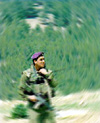 ABU GHNAIM DIARY
ABU GHNAIM DIARY
In Spring 1997, the Israeli government announced the go-ahead for the Har Homa project, a new Jewish settlement to be constructed on the Palestinian mountain of Abu Ghnaim, near Bethlehem. Local residents began to protest against the project, which would complete the ring of Israeli settlements cutting off Palestinian East Jerusalem from the rest of the West Bank. The Israeli project was also clearly intended to siphon Palestinian income from tourists visiting Palestinian Authority-controlled Bethlehem, as one of its componants included a tourist village to be called "Bethlehem 2000". Events reported in this diary section include the clashes that began in the area around the mountain and spread across the West Bank (and Gaza Strip), including the clashes in Ramallah in which Birzeit University students participated and student Abdullah Salah was shot dead, on 29 March 1997. The Har Homa project continued on unabated.
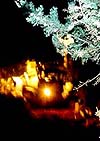 DEMOLITION OF MY HOME DIARY
DEMOLITION OF MY HOME DIARY
On 25 May 1998, I returned home from work to discover a gang of 20-30 armed Palestinians, including members of the security forces, in my home. They had broken into my house, demolished part of my bedroom's walls and roof with a bulldozer, and had thrown my belongings over the front yard. In common with 400 other tennants in Ramallah, we had been in a dispute with our landlady. In the post-Oslo reality of West Bank towns under Palestinian Authority, I was to discover that money was the new religion of these times and that the law was the gun. This diary section offers background to the demolition, resources such as the press releases from the time, and a coming entry will tell the story of the week spent in the house fighting for a legal conclusion to the affair. Following these events, I moved to the US to take an extended break from Palestine. I am currently undertaking fundraising to make the diary a national project in Palestine during the coming years.
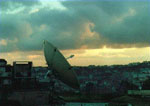 MEDIA DIARY
MEDIA DIARY
Well, no big surprise that this section exists. The Media and the Middle East have been conducting a torrid love-hate relationship for quite some years now. This section of A Personal Diary is dedicated to articles about media coverage, a record of what I have said during my appearances in the media, and links to various sites that look at the role of the media in the Israeli-Palestinian conflict. Recording my media appearances isn't intended as a form of narcissism but rather as a publicly-viewable whip to remind myself to improve these occasional opportunities. Older articles are generally not available as I don't have access to the video tapes. Finally, don't get the idea that I don't like the media. Without journalists - among whose ranks I am numbered - we would have no clue about what was going on in the world. I'm just saying that if you're going to spend millions of dollars collecting the news and broadcasting it instantly around the world via satellite, you should take the time to make sure that you do it right.